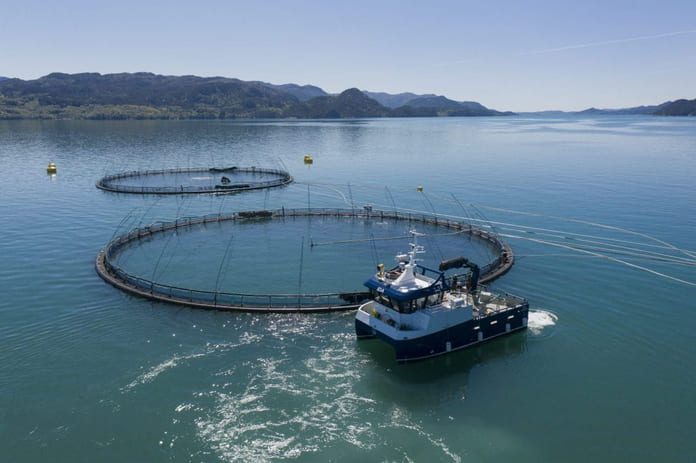In the autumn, the world market will bounce back.
It was not a surprise. When the spot price fell somewhere between EUR 1-1.5 last Friday, it was not unexpected. Salmon prices always fall in the second half of July.
The reason is the same every year: high seasonal growth in the cages manifests itself in increased uptake while the European processing industry reduces its purchases and takes summer holidays.
Increased supply and reduced demand. Then the price is used to fall.
High levels
It fell heavily, but from high levels. In fact, of the past six years, only 2016 has shown higher prices in July than has been the case this summer.

On the demand side, sales of the grocery chains are increasingly driven by salmon fillets in the shopping carts of consumers over the past year and a half, a period characterized by COVID-19 and reduced restaurant visits and travel activity.
Former level
The HORECA market (hotels, restaurants and catering) is still not back to former level, even if it opens more and more almost weekly. When the Horeca segment returns to its former level in the near future, you will see how much the total salmon market has increased over the past two years.
And then the supply side has to pick up.
In the important U.S. market, there are complaints about limited access to goods from its largest supplier, Chile. In Chile, it is winter and low season now. And from Canada, which has only a fifth of Chile’s salmon volumes, there are limited fish to pick up.
As a result, Norwegian salmon must take the load. In the European market and in the air freight markets in East Asia and the Americas.
Extreme
So how are things now in Norway?
It is intense activity. Export volumes are up by 14 per-cent this year compared with the last. A hot summer has resulted in solid growth in the sea, not least in North Norway, where local fish farmers call the growth “extreme”.
Just take a look at the feed sales. 12 per-cent more feed has been sold in 2021 than at the same time in 2020. The trend is growing. Summer sales of feed are up well over 20 per-cent year over year, according to Akvafakta. It means a lot more fish to harvest in the autumn and winter.
And the market needs that.
On land
What about land-based salmon?
At this year’s entry, a harvest volume of 24,000-25,000 tonnes of salmon was estimated from land-based fish farms in the US, Denmark, Norway, Iceland, China, Canada, Taiwan, Switzerland, France, Poland and Dubai. Now, especially after production trouble in both the US and Denmark for market leader Atlantic Sapphire, global production is likely to end at 5,000-10,000 tonnes. Still miles away from affecting a global salmon market of 2.7 million tonnes.
So you have to keep an eye on feed sales and harvest volumes, primarily from the major powers Norway and Chile, in the months to come. And wait for the demand in the autumn to run faster than the supply of fish this autumn.
Because that also happens every year.

